
How to write a job description
All of the work you’ve done figuring out your hiring plan, mapping out core competencies, and building your recruiting pitch will all come together as: the job description.
For early-stage startups where every hire can significantly impact the company’s trajectory, a well-written job description is essential. It ensures you attract talent who not only has the right skills but also aligns with your culture and vision. It also sets clear expectations from the outset, which leads to better performance, higher employee satisfaction, and reduced turnover down the road.
And don’t worry, it’s not that hard to write; you’ve done most of the work at this point.
The components of a job description
- A company pitch that describes your organization’s vision, the significance and impact of the product you’re building, the market you’re addressing, and your unique approach. Convince candidates like you convinced your investors!
- A role pitch tailored to them. Candidates who read your JD should know how their particular skills and experience will contribute to your organization’s growth and evolution. They should understand what they’ll be working on, and it should be exciting!
- The core competencies or experience the candidate needs to have to succeed in this role.
At the earliest stage, if you have only these three components, alongside an "apply" button on your website, that’s perfectly okay. Together, these key elements support a clear line of communication between you and the market.
That said, there are additional elements you can incorporate to captivate and attract candidates. These extra touches can transform a standard job listing into a more compelling read that excites people and gives you a bit of a competitive edge. Some strategic enhancements include:
- Employee benefits
- A salary range
- An EEOC statement
- An “extra sell”
I like how DavidAI organizes their JDs and showcases these core elements. When they were hiring for a Founding Applied ML Engineer, they started with their company pitch:
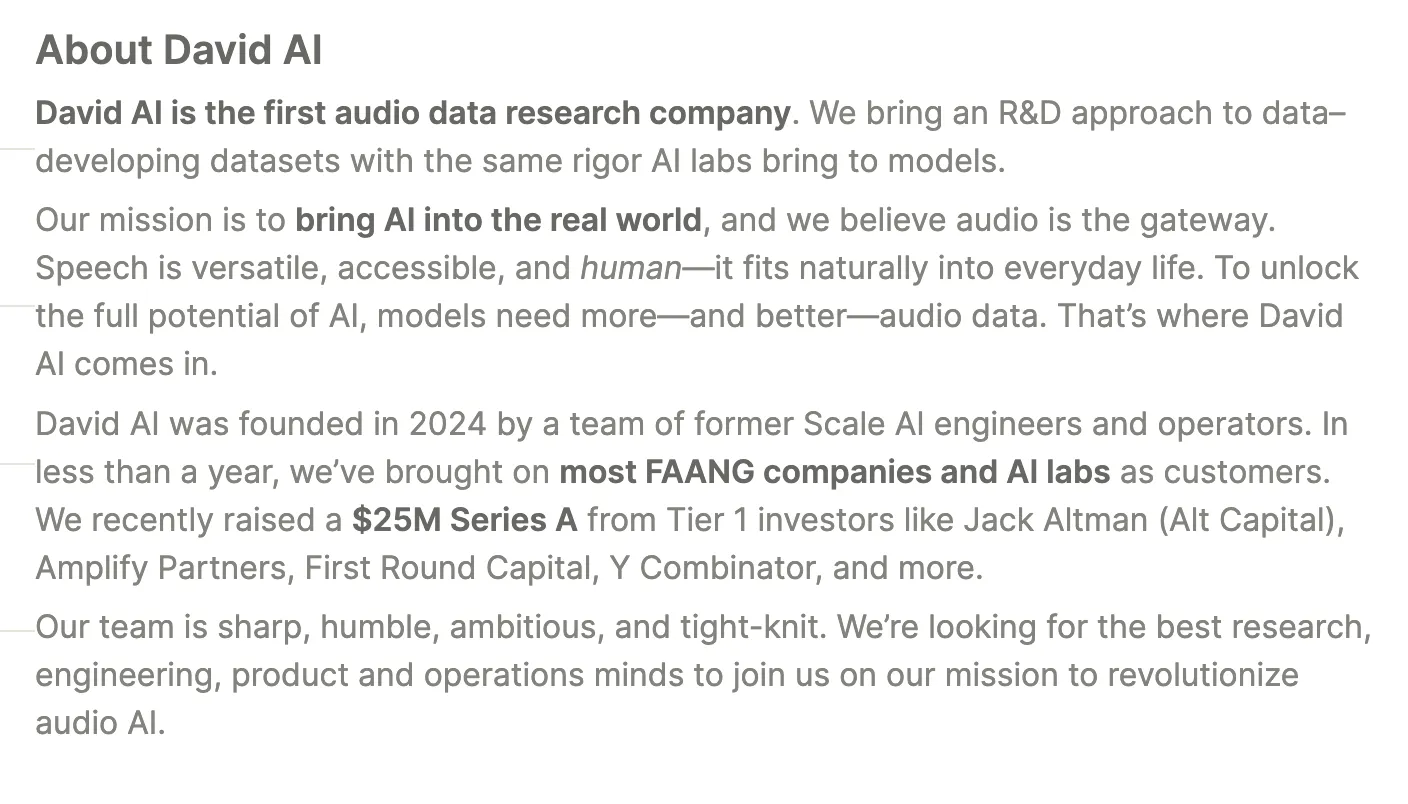
They give a bit of a role pitch, with specifics on what this person will be doing.
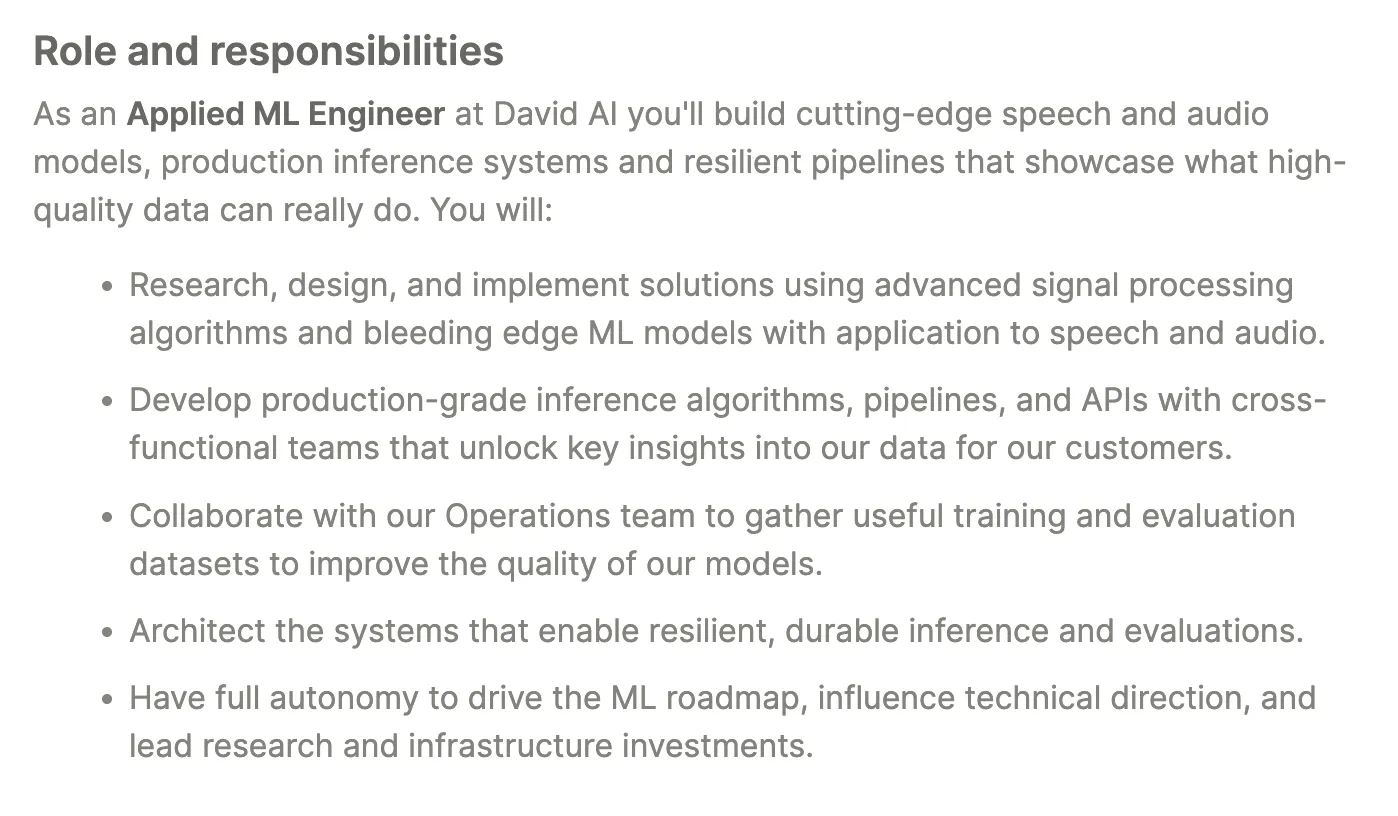
They map out their key core competencies as must haves:
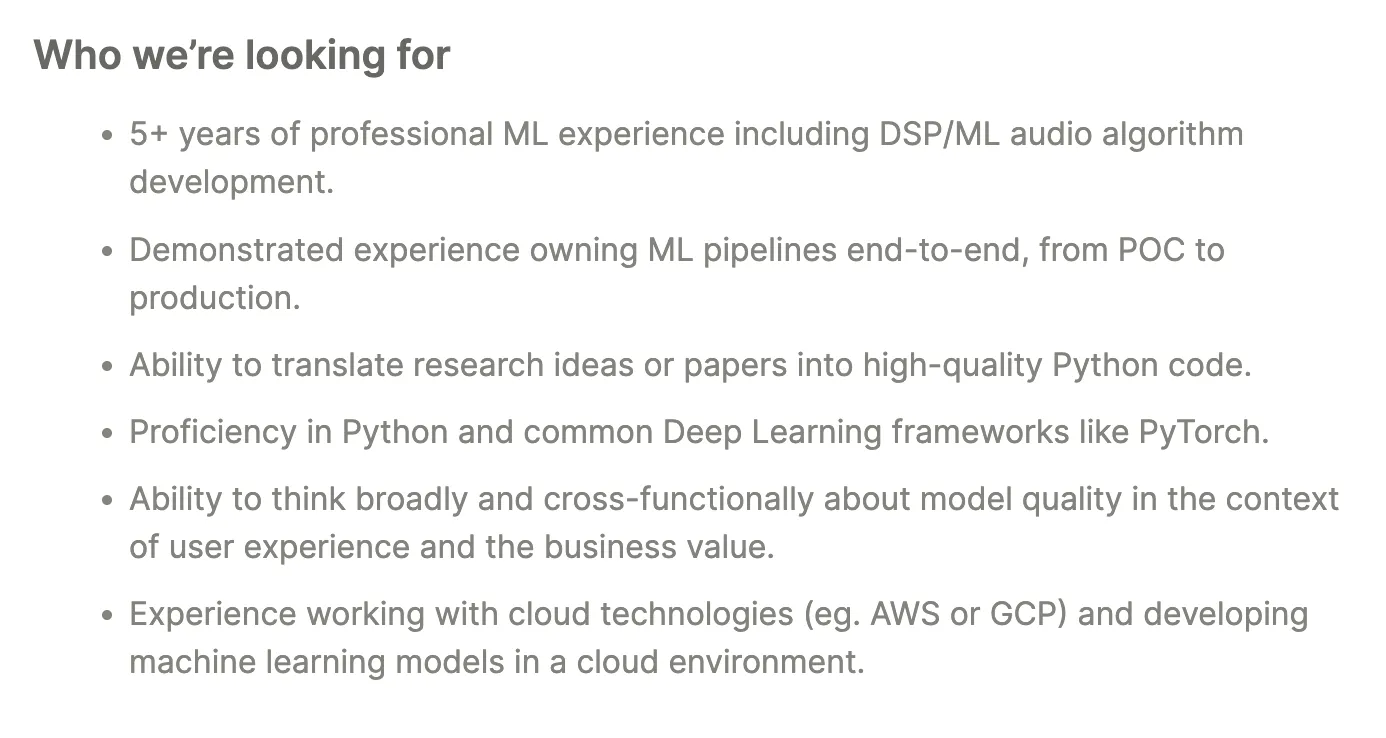
And list out some nice-to-haves just in case:
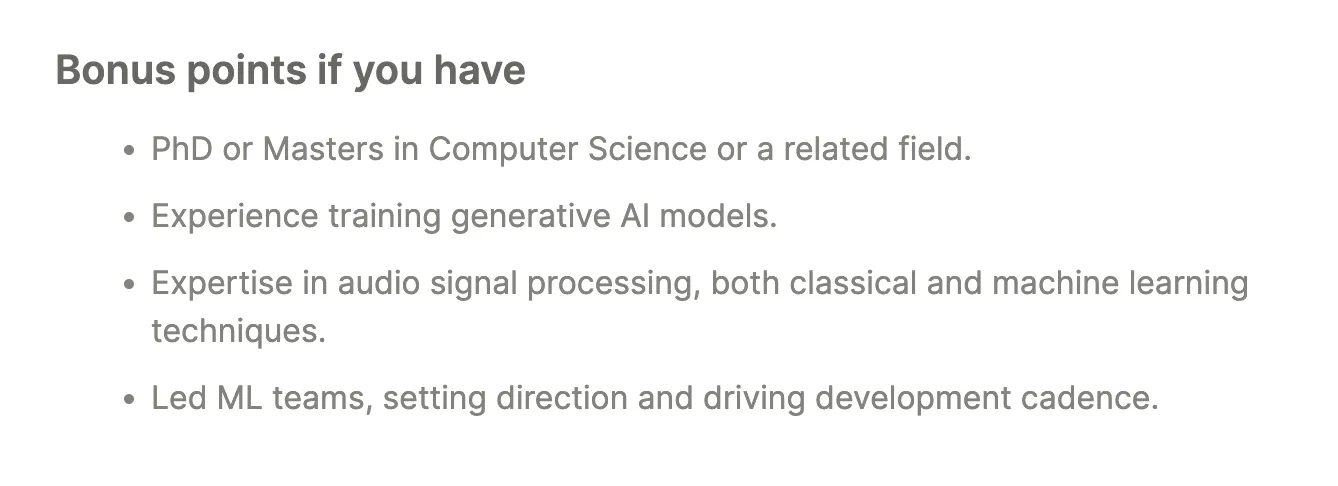
They also add a section on benefits, see below:
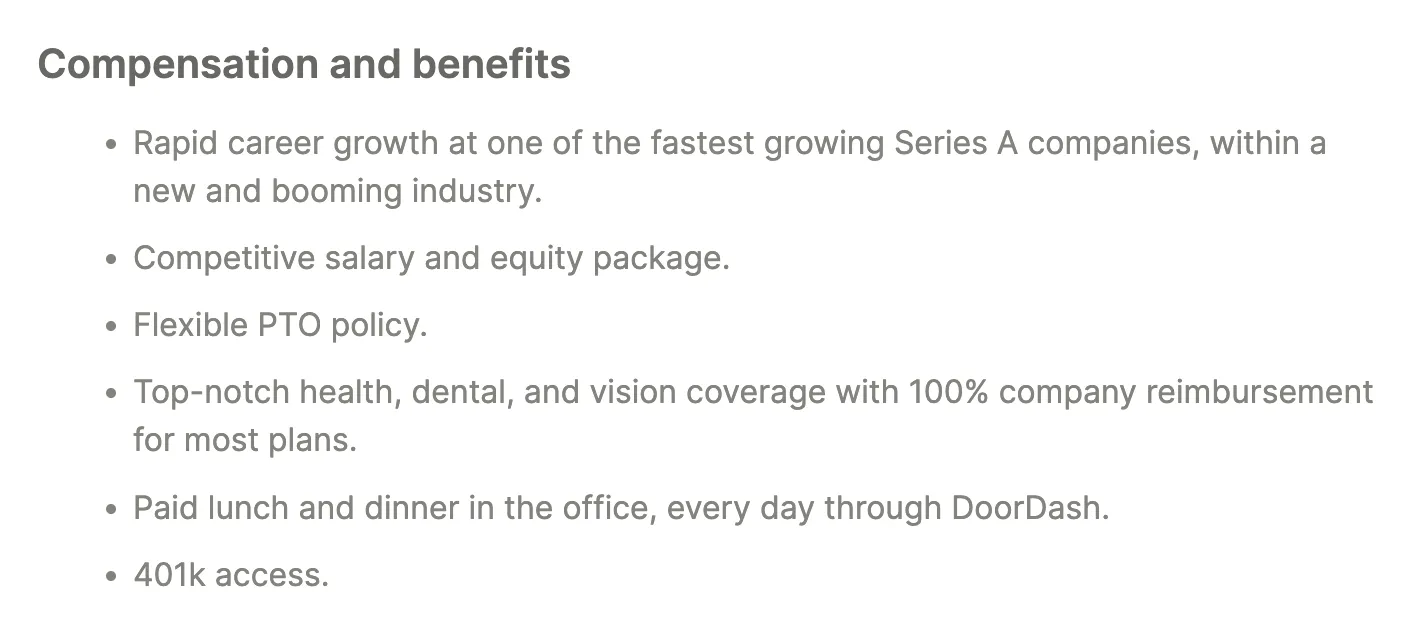
Employee benefits
At the early stage, your benefits should be good enough. Talent won’t be looking to you for differentiated and exciting benefits, but they will want to make sure that their quality of life outside of work isn’t going to markedly change because they are joining you at Seed or Series A. If you’re thinking of trying to save money by offering shitty healthcare plans or not giving your employees the computer they need to do their job, that’s when you’re going to lose out on the talent you need to build a great business.
At baseline, you need:
- Competitive salary and equity (should be a given)
- Health, dental, and vision insurance (usually paid 100% for the employee, and some coverage for dependents)
- PTO policy (many of our companies do unlimited)
- Whatever equipment they need to do their job effectively
- Some sort of parental leave policy
- Maybe something extra that gives a flavor of what your team cares about
For example, bitdrift highlights its inclusive culture and the opportunities employees have for personal development:
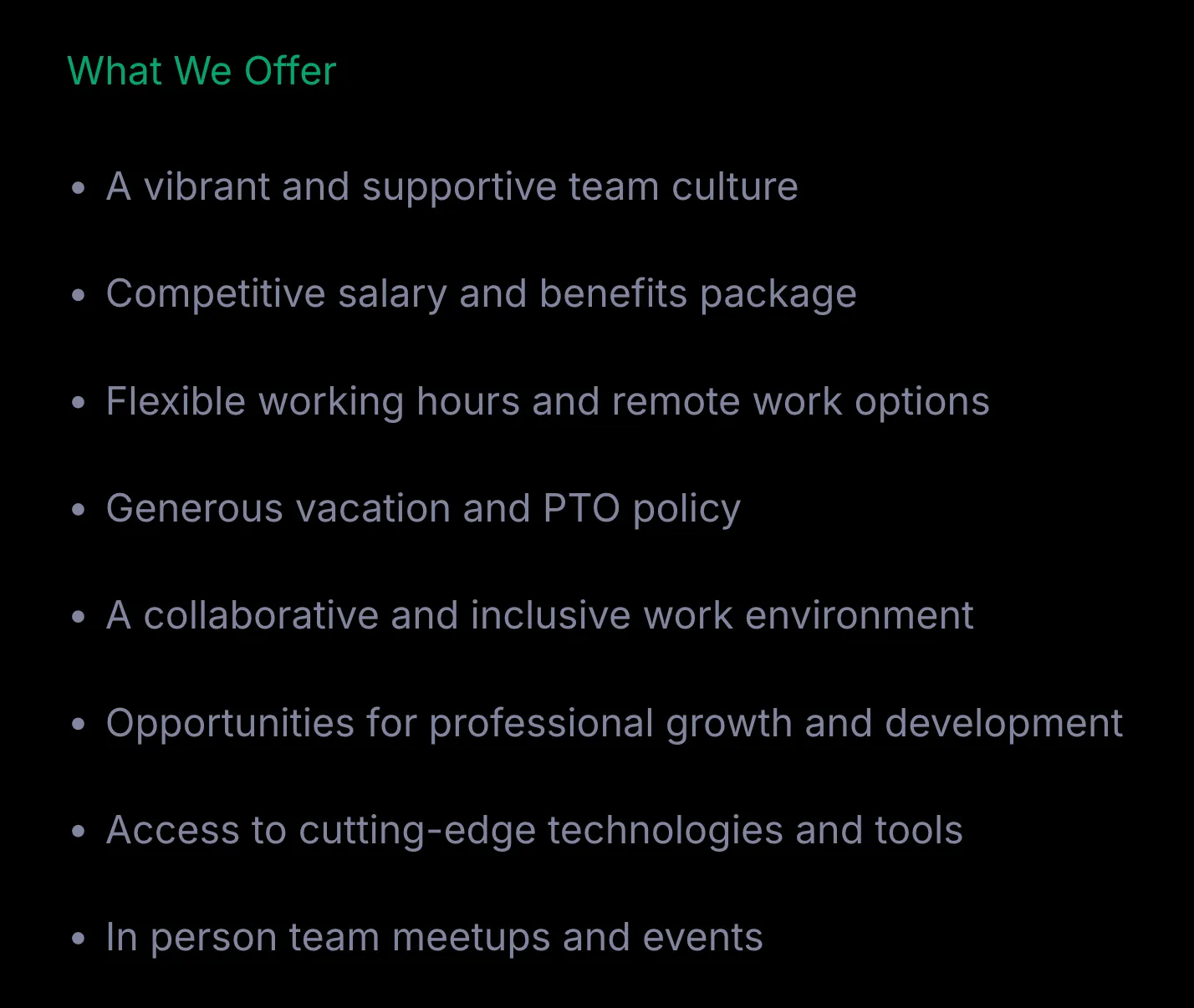
Salary ranges
Depending on your location and company size, it may be the case that you’re required to list salary ranges on your job description. Many early-stage companies aren’t legally bound to provide salary information until they reach a certain size, for example, 15 in California.
My recommendation is to list salary ranges only if one of these two conditions have been met:
- You legally have to report them.
- You’re confident in the range you’re offering. By “confident,” I mean you’ve looked hard at market data, gotten feedback from candidates on the market, and are clear that your salary range is competitive. If you’re still testing things out and are open to making changes as you gather more market data, hold off on publicizing salary for now.
Equity
I recommend saying in your JDs that you offer competitive equity, but not specifying ranges. Equity can be highly variable at the early stage, and it’s not something you're required to report, so make it easy on yourself and keep the details out. For example, Scribe writes “equity in a hypergrowth startup” but doesn’t go into more detail.
EEOC statements
Including an Equal Employment Opportunity Commission (EEOC) statement in your JDs underscores your commitment to fostering a diverse and inclusive workplace, even at this early stage. By highlighting that your organization provides equal opportunities regardless of race, religion, sex, nationality, age, or disability, you’ll attract a broader pool of candidates who value diversity and want to work for companies and leaders who share this value. (Of course, only include such a statement if you believe it and plan on living by it.)
Runway approaches their EEOC statements like this:

If you’ve got the fundamentals right (like building your hiring plan, preparing the role, and developing your recruiting pitch), you’ve already done the hardest parts and writing the job description should be a breeze.



